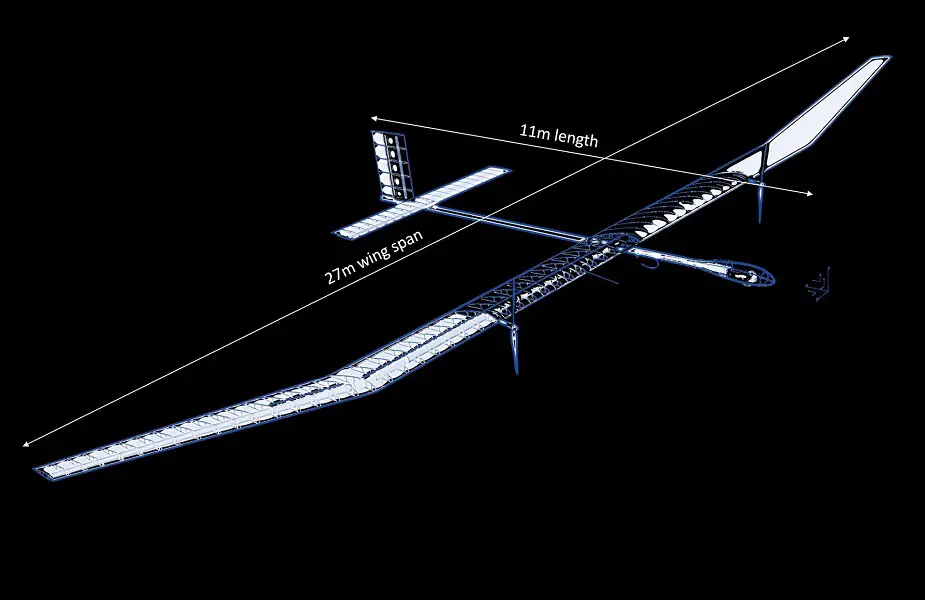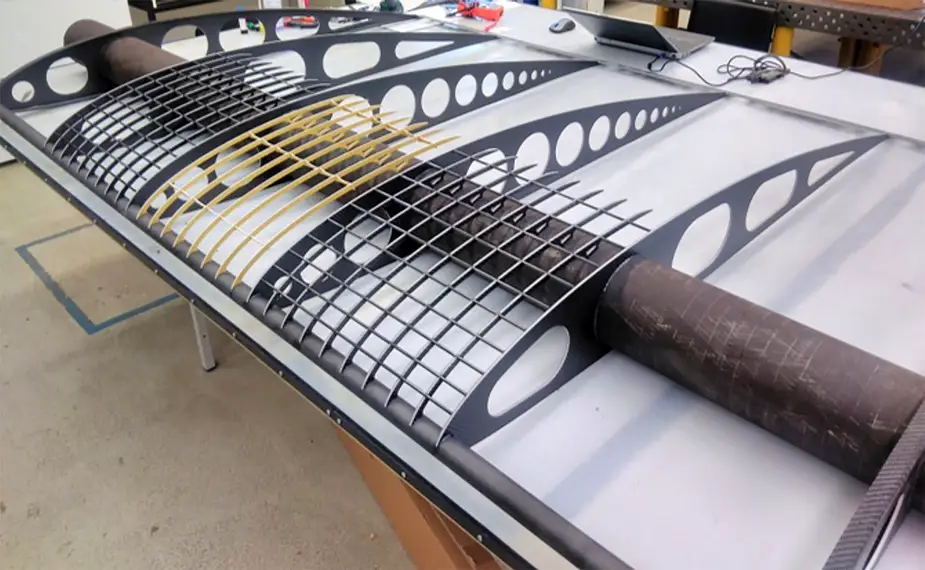Breaking news
Germany: DLR develops an unmanned stratospheric aircraft.
Earth observation and global communications – these two terms immediately bring satellites to mind. Constructing these satellites and placing them in orbit is costly and, at the end of their missions, their remains are sometimes left behind to become space debris. Aircraft or helicopters, however, are also not ideal for these tasks. Their deployment is limited by factors of time and location and highly dependent on the weather. A team from the German Aerospace Center (Deutsches Zentrums für Luft- und Raumfahrt; DLR) is researching and developing an unmanned, solar-powered stratospheric aircraft for future scientific experiments that combines the advantages of spaceflight and aeronautics.
Follow Air Recognition on Google News at this link
 Alpha HAP design study (Picture source: DLR)
Alpha HAP design study (Picture source: DLR)
DLR researchers have named their technology carrier HAP alpha. "HAP stands for 'High-Altitude Platform'," explains Florian Nikodem from the DLR Institute of Flight Systems. "They are usually solar-powered platforms that are permanently stationed in the lower stratosphere at an altitude of 20 kilometres."
At this altitude, they fly far above civilian air traffic and even above the weather.They can be deployed anywhere provided there is sufficient solar power and, depending on their payload, can be used for a wide variety of missions. They are independent of the weather once they have reached the lower stratosphere, and they are also independent of mission durations as there is no crew on board. This is what sets them apart from conventional aircraft.
The High-Altitude Platform (HAP) alpha weighs 36 kilograms, has a payload capacity of five kilograms, a wingspan of 27 metres and is expected to fly to an altitude of 20 kilometres. The first flight is planned to take place by the end of 2022.
This platform could have both civilian and military application.
 The High-Altitude Platform weighs 36 kilograms, has a payload capacity of five kilograms, a wingspan of 27 metres and is expected to fly to an altitude of 20 kilometres (Picture source: DLR)
The High-Altitude Platform weighs 36 kilograms, has a payload capacity of five kilograms, a wingspan of 27 metres and is expected to fly to an altitude of 20 kilometres (Picture source: DLR)
In contrast to aircraft and non-geostationary satellites, HAPs can be permanently stationed at any location. Unlike crewed aircraft, they operate autonomously – in the same way as satellites. However, unlike satellites, their take-off and landing capability allows for maintenance and changes to the payload. In addition to conventional applications such as remote sensing or measurements for Earth observation, HAPs can enable operations in crisis areas or serve as a hub for communication networks.
17 DLR institutes and facilities are involved in DLR’s internal High-Altitude Platform (HAP) cross-sectoral project: the Institute of Flight Systems, Institute of Composite Structures and Adaptive Systems, Institute of Aeroelasticity, Institute of Aerodynamics and Flow Technology, Institute of Flight Guidance, Institute of Communications and Navigation, Institute for Software Technology, Systemhaus Technik, Institute of System Dynamics and Control, German Remote Sensing Data Center, Microwaves and Radar Institute, Remote Sensing Technology Institute, Institute of Optical Sensor Systems, Institute of Atmospheric Physics, Space Operations and Astronaut Training Facility, Institute of Robotics and Mechatronics, and Institute of Networked Energy Systems.
The HAP project was launched in 2018 and will continue until 2022.


























